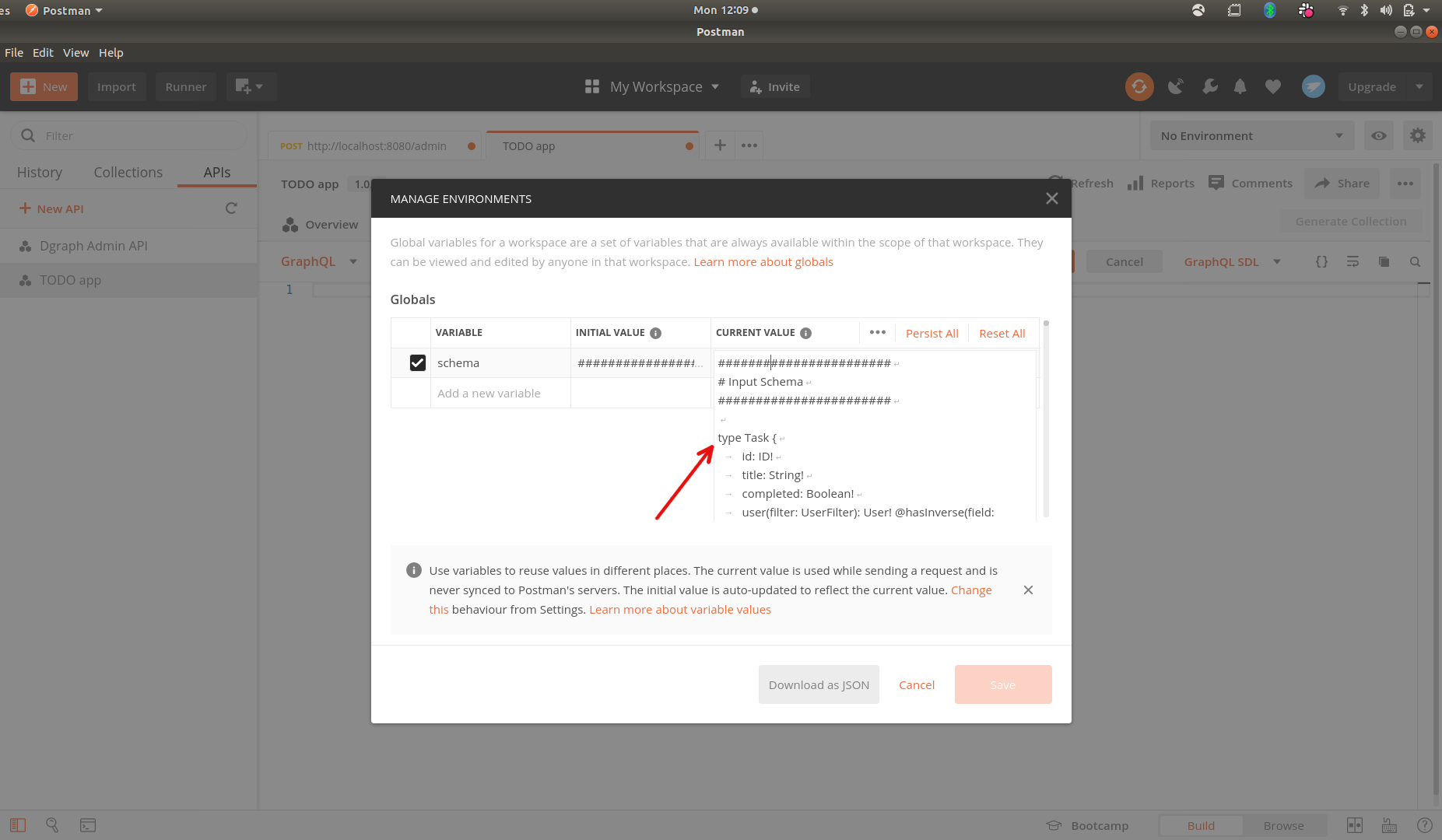

POSTMAN GRAPHQL SCHEMA HOW TO
Now, considering the private GraphQL API context again - most of the time, you don’t want just anybody to learn how to run queries against your private data. You’d also likely need to authenticate yourself, then accompany all of your requests with a valid auth token, but again - this is a constraint typically communicated better with words - through API documentation. Once we know what we can do with the API, we can write queries and mutations.įor a public GraphQL API, querying and mutating your personally owned data is likely the very reason why the API exists. However, we should consider the risks of leaving an API not intended for use by anyone other than the developers in your org (with auto-generated documentation on how to perform every operation ) out in the open on the internet. At first glance, it may make sense to leave introspection on in production so that developers on your team could merely point their GraphQL IDEs to the URL of the production graph, look at the structure, and see what’s possible. On the other hand, to learn all possible operations in the private context, security is the prime concern.

In the context of a public GraphQL API, to learn all possible GraphQL operations, you certainly could leave introspection on in production, but our principled belief is that clear and expressive documentation (API references) is the better discoverability tool for a public GraphQL API. Use case: Learn all possible GraphQL operations The vast majority of us are building private GraphQL APIs. Whereas a private GraphQL API is one built to serve the client-side experiences for products built by developers within your organization. private APIsĪ public GraphQL API is one made primarily for consumption by developers outside of your organization (like the Shopify or GitHub APIs).

Let’s consider the utility of introspection outside of the context of development, in a production environment.įirst, we need to make a distinction between public and private GraphQL APIs. Behind the scenes, GraphQL IDEs use introspection queries to power the clean user experience helpful for testing and diagnosing your graph during development. While we don’t often use introspection directly, it’s important for tooling and GraphQL IDEs like Apollo Studio, GraphiQL, and Postman. We believe that introspection should primarily be used as a discovery and diagnostic tool when we’re in the development phase of building out GraphQL APIs. This includes data like types, fields, queries, mutations, and even the field-level descriptions. GraphQL introspection enables you to query a GraphQL server for information about the underlying schema. In this post, we’ll discuss why we believe you should disable GraphQL introspection in production, how to do it, and present a way to get the same benefits of introspection in production using a schema registry instead. If you liked this article, please like it and follow me on #Hashnode to stay updated.Once your graph is up and running in production, like anything else on the internet, it’s a good idea to implement precautions to prevent it from being compromised by bad actors.ĭisabling introspection in production is a widely debated topic, but we believe it’s one of the first things you can do to harden your GraphQL API in production. Sometimes, it's good to trust the documentation of a tool over your skills to figure things out. See the schema, create queries, and you are all set for API exploration 🌟. Enter the URL and the online editor is configured for you query the schema to know the schemaĮasy way: GraphiQL. So, how to solve this ? Well, there are two ways to solve it: In Postman, I stared at "Schema fetched" for some time.Īfter googling on "how to access already fetched schema in Postman" - I figured it's a feature request in Postman backlog. In Thunder Client-VSCode Extension we do not have functionality to auto fetch the graphql schema as of yet. I forked the collection in Postman and was about to start to write GraphQL queries.Just to realize that I do not know the schema to query. I am exploring the kontent.ai GraphQL library. When you are at the task of API integration, you need tools that set you up for a good start.


 0 kommentar(er)
0 kommentar(er)
